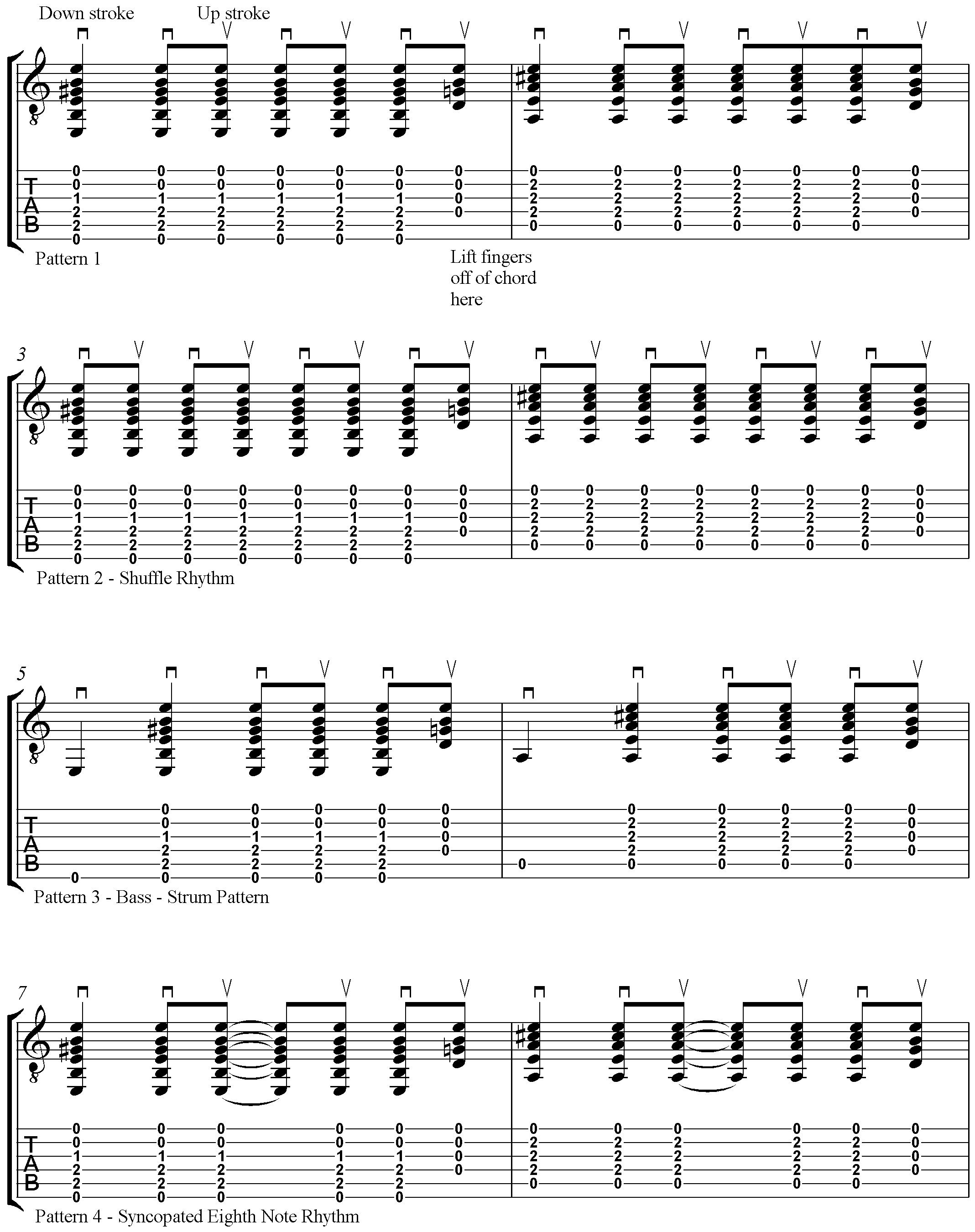Tips for Beginners and Troubleshooting Strumming Problems
Strumming Techniques for Beginners
A lot of the concepts I’ll be talking about in this post are covered in the lessons I’ve done on other pages in the site, so I will be referencing those.
The first thing many people want to do when they learn how to play guitar is to learn how to strum the guitar to accompany themselves or a friend singing. A lot of times beginners will try to strum without a pick and just use their thumb, but I strongly discourage this with my students. Learning how to use a pick is not that difficult, and acoustic guitars have a clearer sound when strummed with a pick. There’s nothing wrong with choosing to strum with your thumb if the song calls for it; but, if you want to be a well-rounded guitarist capable of playing multiple styles, you need to be able to use a guitar pick. If you have any problems holding the pick, please check out my video and page on “Guitar Basics.” Also, feel free to comment on this post with any questions.
Assuming you’ve mastered holding the pick, the first thing you want to be able to do is strum down and up, and be able to switch between a few basic open chords. You need to at least know how to play E major, A major, and D major; if you don’t, check out beginner guitar lesson 3 which covers these chords.
Strumming down on the guitar
When you strum down, you want the pick to strike all of the strings in the chord. You should try to avoid hitting strings that aren’t in the chord, but that doesn’t necessarily mean that you need to stare at your pick hand while strumming. You can use your fret hand thumb to mute the sixth string, and also the fifth string for four string chords. Doing this gives you a little more leeway with the accuracy of your strumming technique.
Strumming up on the guitar
This is where the problems start. When you do the upstroke, you shouldn’t try to force the pick to go across all of the strings. Instead, you want to do more of a swooping motion with the pick that hits the bottom three or four strings. Also, you should try to turn your pick hand a little so the pick is angled in such a way that is easier to drag it across the strings.
Switching Chords
You should be able to switch chords every four beats, strumming eighth notes. Don’t worry about switching faster than that – in most pop songs you’ll spend at least 4 beats on each chord before having to switch. If you have difficulty switching between chords, make sure you’re doing the “open strum trick.” Before doing the last upstroke before the chord change, you should lift your fingers off the chord to start moving toward the next one. It’s not cheating, it’s something that all guitar players do.
What Should I Strum?
Obviously this is a pretty open ended question. If you’re not trying to learn specific songs and rhythms and are trying to make up your own strumming patterns, you probably don’t have any idea where to begin. In the graphic below are four basic strumming patterns to learn and build upon.

Also check out the audio to go along with the tab.